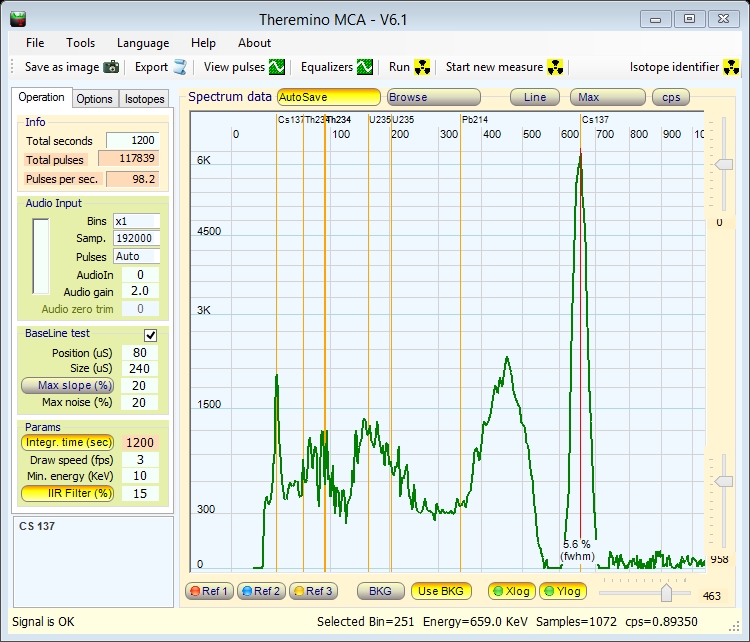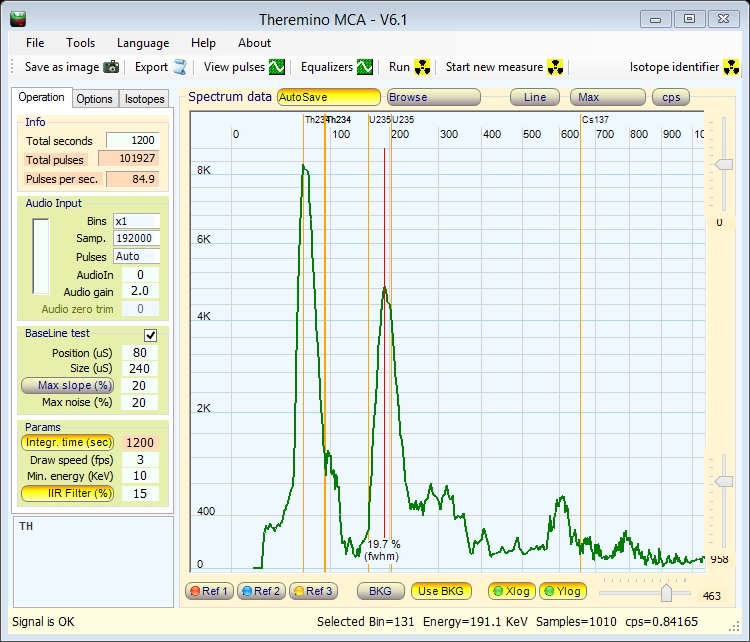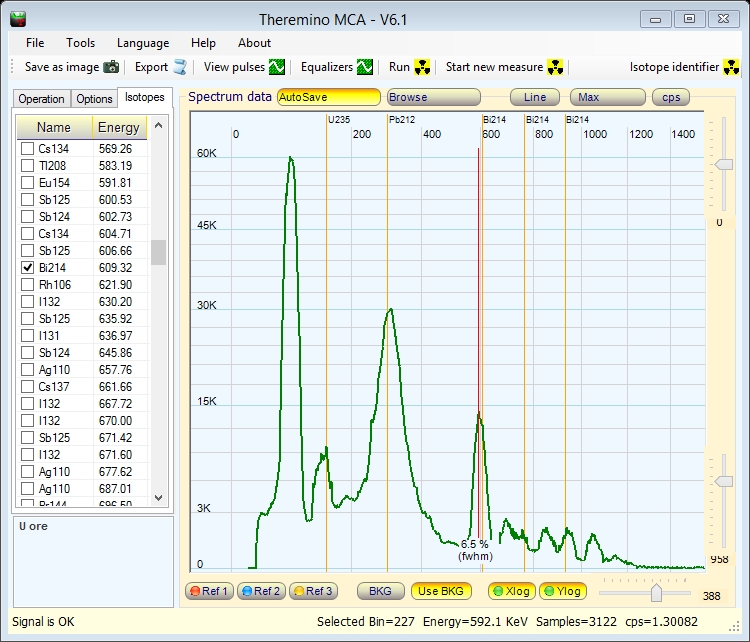I did choose the Theremino PMT adapter as a base for my spectrograph, since the Geiger adapter used in the NSBRM worked so well. Since it was not available for purchase I made my own copy following strictly the recommendations from Alessio.

The result was very good and I measured 0.4 mV of ripple. It could go down to 0.3 mV, but I had a couple of components that do not comply with specifications. I will get the proper ones next time I place an order with Mouser. The first system was assembled following the recommendations for the paint-can-scintillator (from Prutchi). I used a large piece of BC412 plastic scintillator coupled to a Philips XP5312 PMT wired as indicated by Alessio.
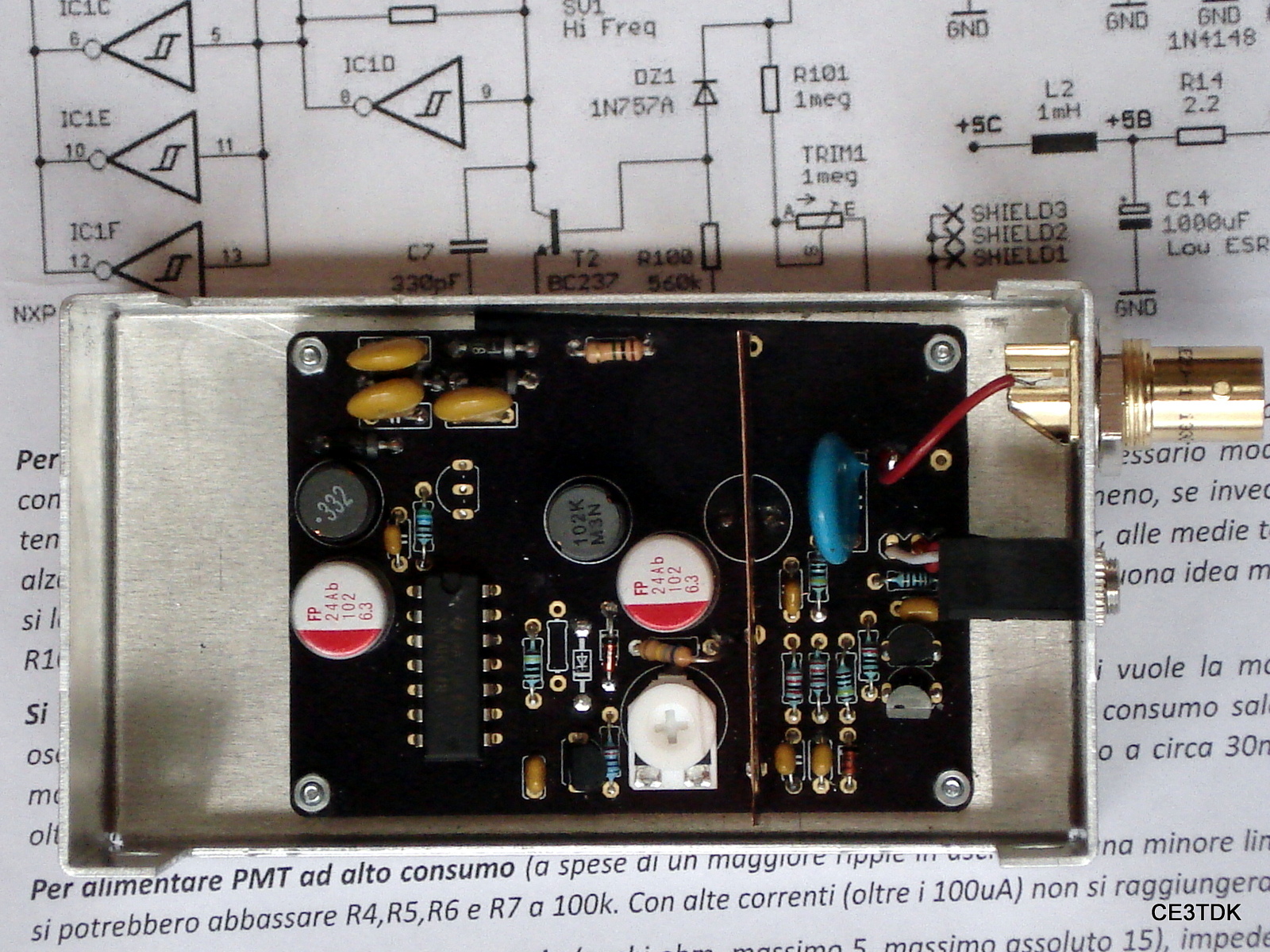
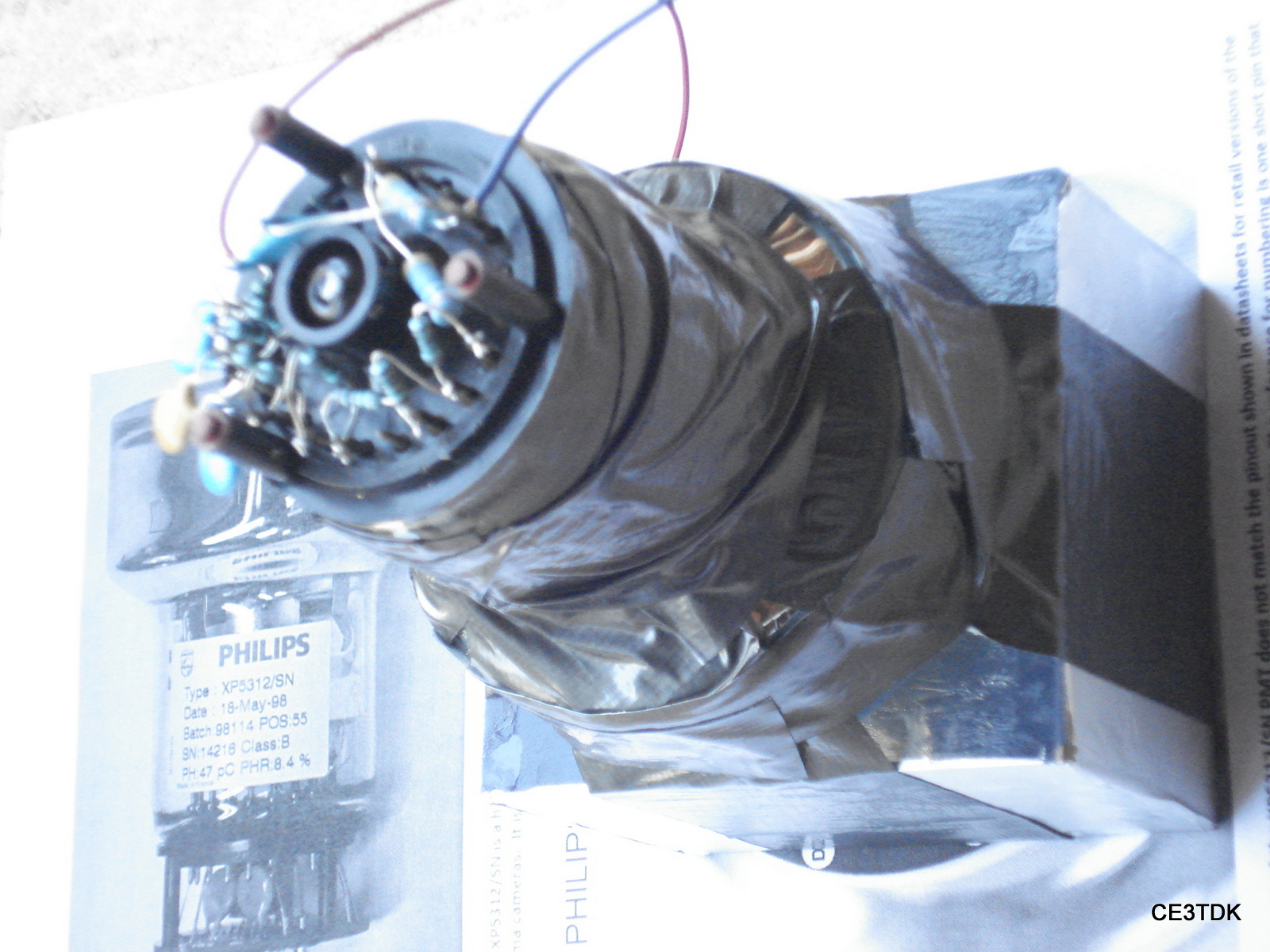
This setup was quite useful for debugging my project and getting familiar with excellent Theremino MCA software. However, it was useless as a spectrograph since plastic scintillators are not suitable for this use ( I learned later...). I am currently planning to use it in my background radiation monitor, since it is rugged (the paint can!) and quite sensible.
Back to the quest for a suitable (and cheap...) detector, I tried a small (18*40 mm) NOS soviet NaI(Tl) crystal. I did not want to dismantle the paint can detector so I purchased also a small PMT Hamamatsu R647 (1/2"). Here are the two assembled, protected by foam, and installed in a small cookies can:
The first operation was to calibrate the energies using the spark gap (137Cs):
Calibration was not straithforward: I had a strong peak at very low energies. If the general count increased (by some radioactive source), also this peak would increase, so it was an artifact of my system. I suspected that it could be caused by secondary emission from the catode every time it was it by a pulse. I was operating the PMT at 1150 V (below its limit of 1250 V). I reduced the HV to 800 V and the peak disappeared completely.
Then I found some sort of attenuation on the high energies. It looks like the AGC is on, but it isn't. Once positioned the higher peak, I had to use carefully the equalizer to lower the gain for low energy and have the first peak corrected. BTW the fwhm is not bad at all.
Then I measured the Thoriate mantles, to get a confirmation:
It looks like I have a calibrated gamma ray spectrometer!
So I tried to identify isotopes in my uranium ore: 4.6g reportedly from Grand County, Utah.
For the isotope I searched the net to see which are the most common and I looked for 235U, 212P, and 214Bi. They match pretty well my spectrum. However, I still wish to find some explanation for the attenuation at medium and high energy. And I still look for some high energy source.

